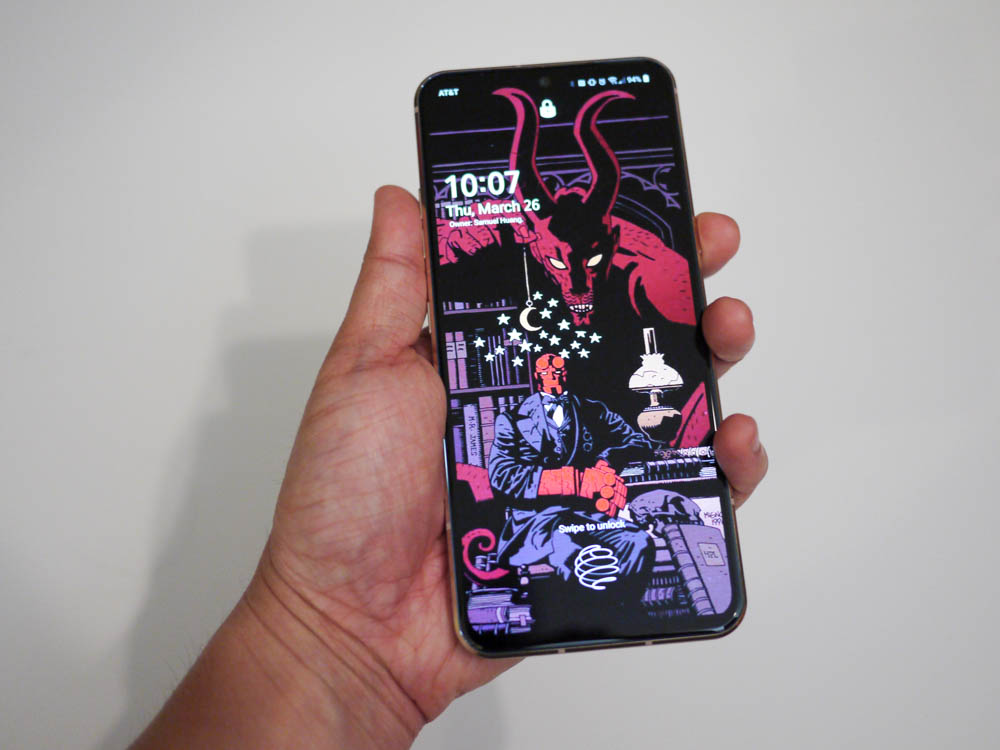
For most of you readers here in the U.S., the LG G8X was the first of the LG phones here to offer a Dual Screen cover. That wasn’t the case in Korea in which the LG V50 ThinQ 5G was in fact the first to have it. We in the U.S. did have a version of the LG V50 ThinQ 5G, but it did not have the connections necessary for the Dual Screen. We actually reviewed the Korean model of that phone last year and while I was pretty impressed with it, it has some limitations. That’s not the case anymore with the LG V60 ThinQ 5G and its Dual Screen cover as it fixes pretty much every annoyance we had with the previous model.
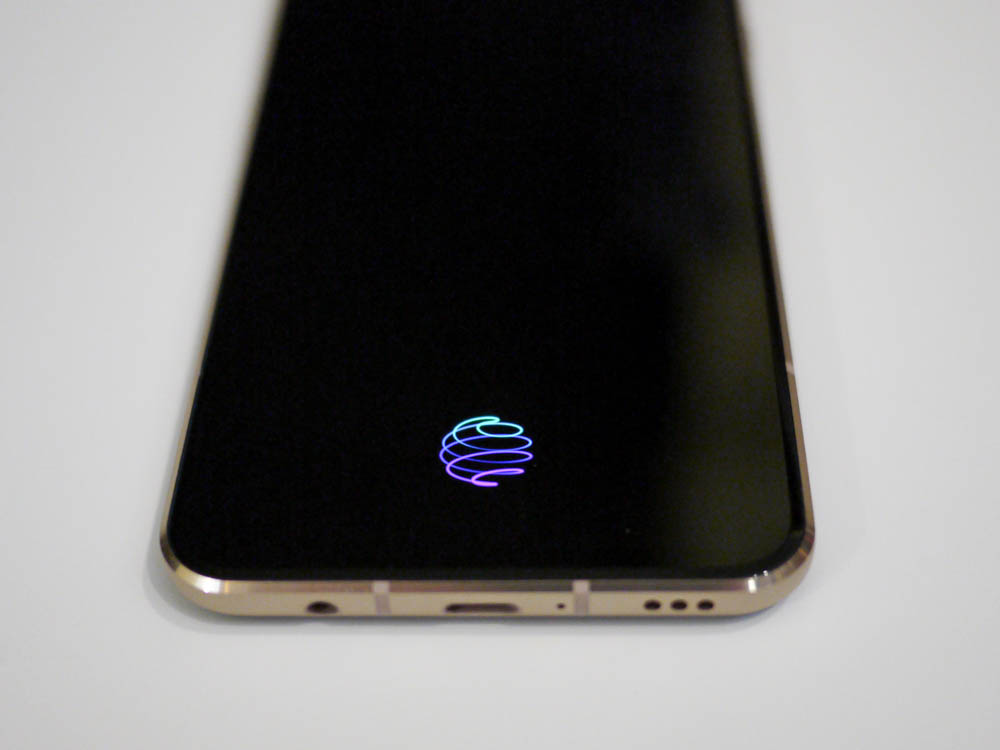
DESIGN
Let’s first start with the main device, the LG V60 ThinQ 5G before we talk about the Dual Screen accessory. For the duration of this review, I’m just going to refer to the phone as the LG V60 just to shorten it up and not have to type out the whole name over and over again. The LG V60 is a huge phone. It is a lot bigger than the previous LG V50 and has a whopping huge, 6.8 inch screen with a screen ratio of 20.5:9. The only other device I’ve used with a screen ratio close to this are the new Sony Xperia 1 (21:9) devices in which the taller screen made for a very pleasant video viewing experience.
The screen uses LG’s POLED technology which produces a bright picture and vivid colors. One very curious spec on the display however is the resolution which sits at 2460 x 1080 pixels with 395ppi, which is much lower than many current flagships and lower than what appeared in many previous LG V-series devices. For instance, the LG V50 before this has a max resolution of 3120 x 1440 pixels with 538 ppi. That means while the screen is larger, it also got downgraded, resolution wise. Not entirely sure why they did this, other than to match the resolution of the Dual Screen cover or to bring costs down, but this is a small ding in an otherwise great device. Most of you will probably not notice the decrease in resolution however.

Next up while we’re still on the topic of the screen, there is no more large notch up top and instead this has been replaced with a teardrop notch. This of course has its advantages and disadvantages. For starters, there is now one camera up front instead of two. The speaker up front is larger now since it got moved above the lens. Losing the huge notch makes it look better and allows for more information in the status bar, but we lost Face Unlock in the process. I assume that’s from losing one of the cameras.
Something else new on the display is the addition of the under display fingerprint reader which is an an optical unit. Tapping on the screen will light up the area you’re supposed to place your thumb over but you’ll probably get used to where to place your thumb after a while without even looking. In terms of accuracy, it doesn’t seem quite as accurate as the previous rear mounted fingerprint readers. Once in a while I’ll have to touch the reader several times before it would unlock. It’s also not quite as fast.
All other buttons on the LG V60 are pretty much in the same place as in previous models and you’ll be happy to note that the audio jack is still there as well. That also means LG’s fantastic Quad-DAC is still there for 32-bit Hi-Fi audio.
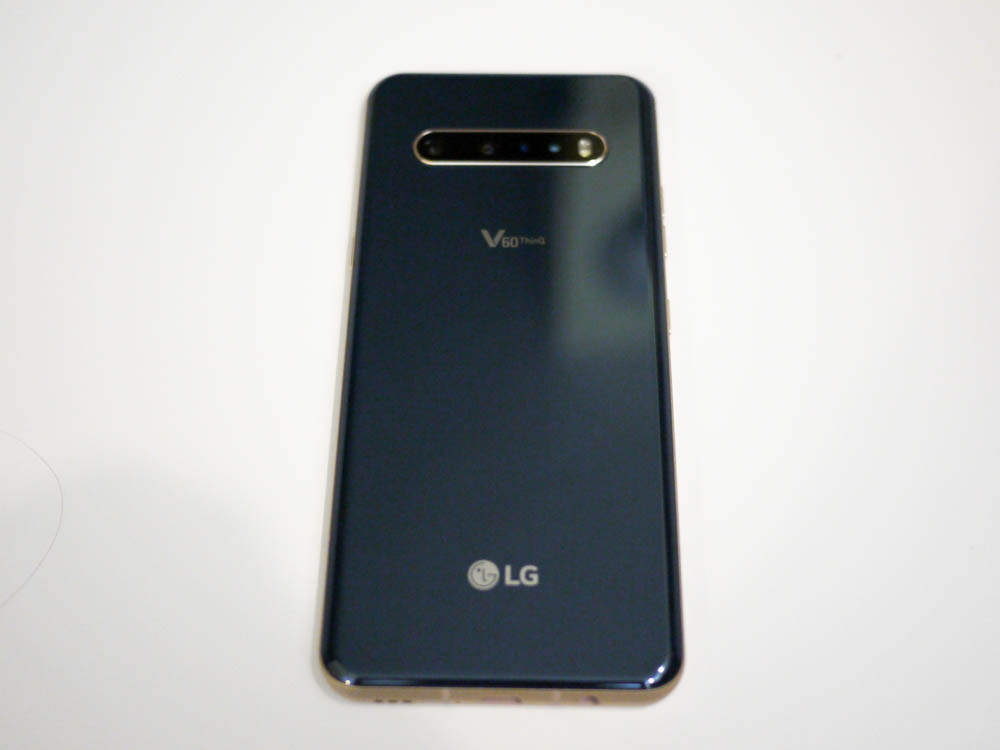
Moving to the rear of the LG V60, you’ll note that there is still a horizontal array of cameras located near the top, but gone is the rear fingerprint reader, since that moved to the under display unit. I’ll talk more about the cameras later.
Design wise, the LG V60 is a very beautiful and upscale looking device. Like I mentioned in my first impressions post, I’m digging the new chamfered edges on the metal border and the glass back seems more premium for some reason. Maybe it’s because of the new Classy Blue color and the gold metal accent color combination. While previous LG V-series devices looked pretty good, the LG V60 just looks so much better.
My only real complaint about the look is the raised camera array on the back. The LG V50 had all the cameras hidden under the rear glass which made it look so much cleaner, but the LG V60 brought back the hump.
SOFTWARE
The LG V60 comes preloaded with Android 10. I had mentioned in another post though that because this is an AT&T version of the phone, it comes with a lot of preloaded junk apps which I immediately got rid of by either uninstalling them or disabling them. I did notice that compared to my unlocked LG V50, the LG V60 is missing several LG made apps. Most notable is the LG Calendar and Tasks apps, LG File Manager, LG Email, LG FM Radio app, and LG TV app (might be Korean only). Some of these are replaced with Google versions while the LG FM Radio app is just completely gone with no substitute. You can however side load this with a bit or research and it does work. You just have to find the .APK file for it.
In terms of firmware updates, I really don’t know what the situation will be like for this. On the unlocked LG V50, I was actually getting a lot of updates on it on a regular basis from LG. I have no idea what this will be like on AT&T.
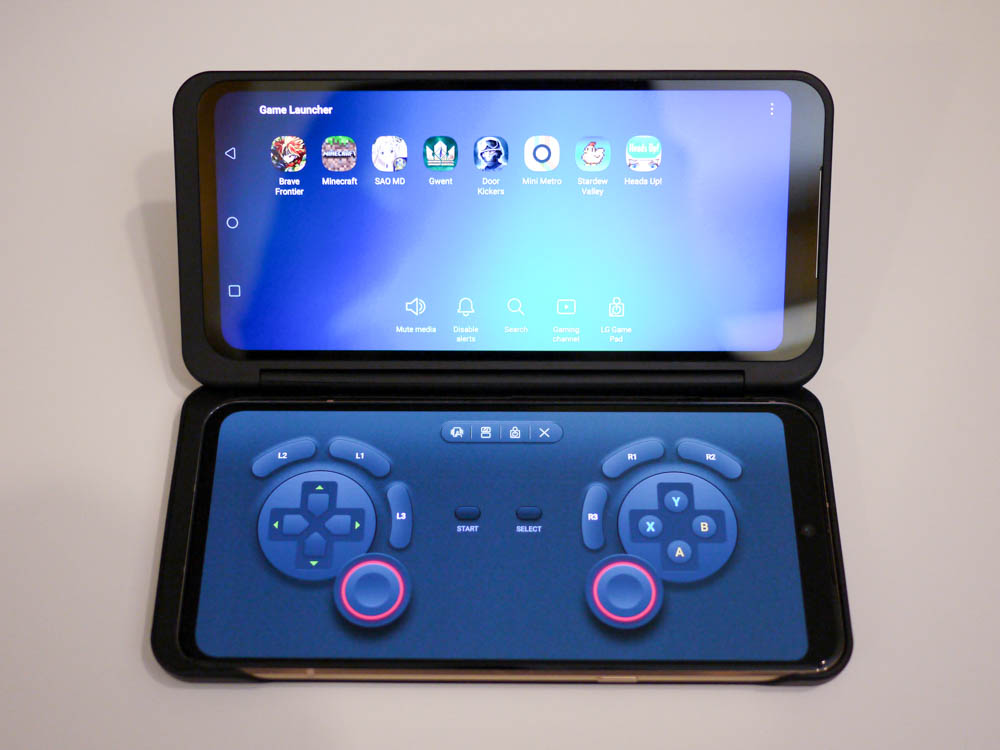
Like the LG V50 with Dual Screen, the LG V60 also has a dedicated app for the Dual Screen cover. The app allows you to turn on and off the screen, swap apps between screens, and to turn off the main screen when using the Dual Screen. This app usually always sits on the edge of the screen. You can move it anywhere on the edge, but it can sometimes get in your way.
Other notable software additions include a Game Launcher and ability to use one of the screens as a virtual game controller. The Dual Screen also allows you to span an app to both screens, but only works for a handful of apps so far.
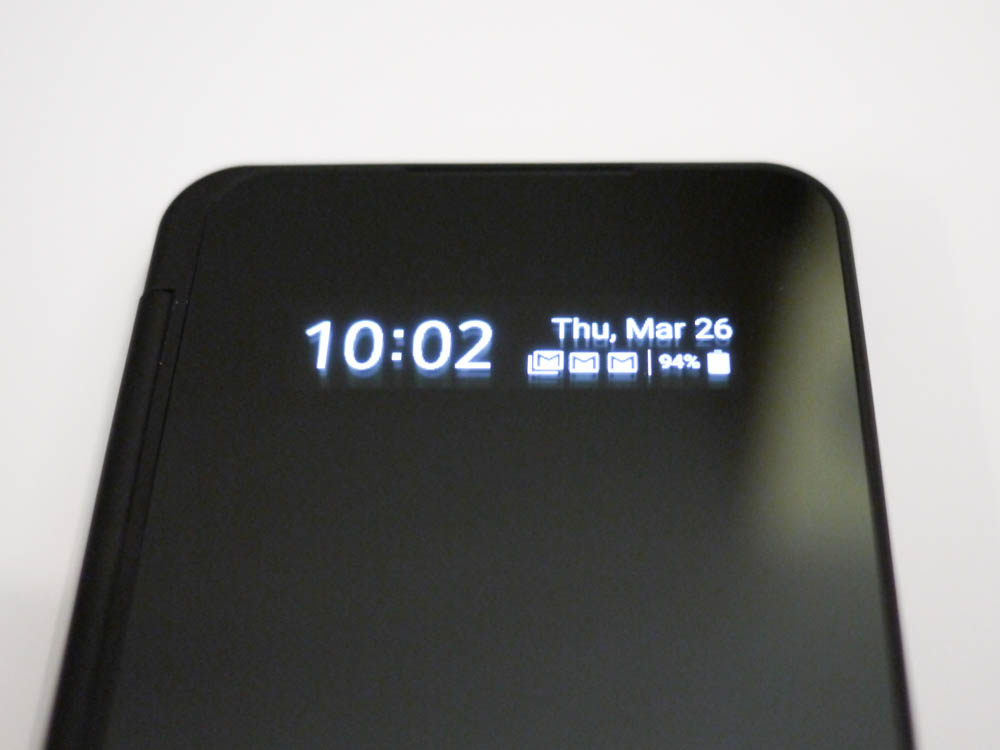
DUAL SCREEN
Since we’re on the topic of the Dual Screen, we might as well talk about it now. The Dual Screen on the LG V60 is much improved over what I saw on the LG V50. It’s slimmer than before, both the case part and the screen portion. It’s also powered via USB-C port now instead of the pogo pins from the LG V50. It includes a magnetic charging adapter too for the USB-C cable so you can charge the phone through the case. There’s also a ribbed back for better grip and it seems like there’s also a soft touch coating applied to the exterior.
The screen has the same resolution and size as the main screen, which is 2460 x 1080 pixels with 395ppi. The odd thing here is that even this screen has a teardrop notch, even though there isn’t a camera there. They probably just did this to mirror the main screen.
Up front, they added a smaller display that is meant to show the time and notification icons. It even shows who is calling if you receive phone calls. Note that you’ll need to enable notifications for your lock screen, otherwise they won’t show up here either.
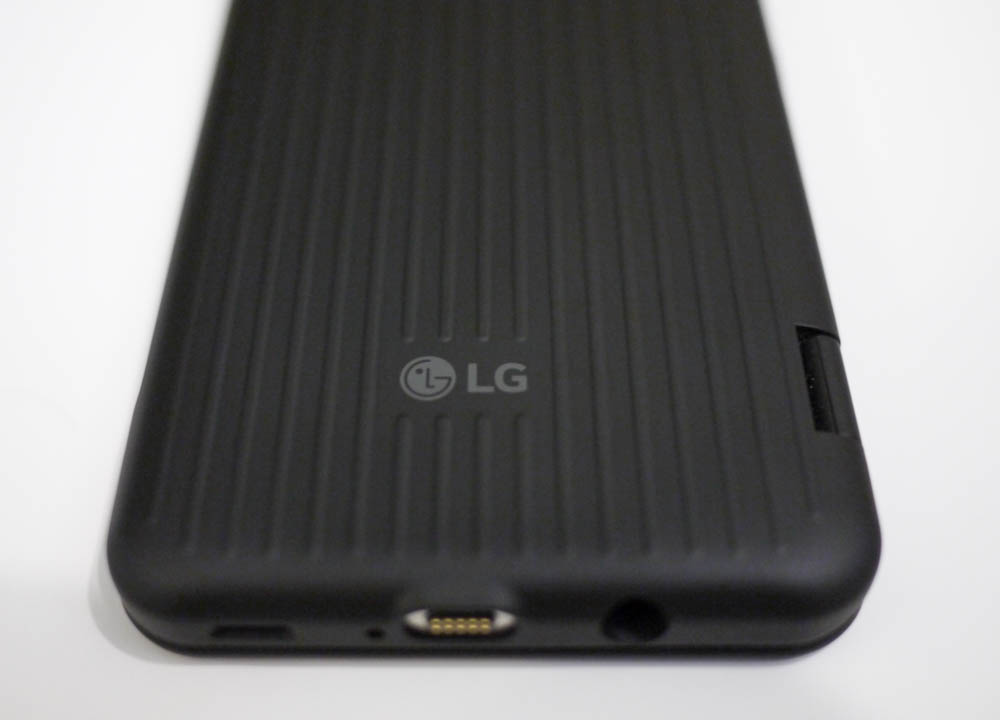
With the Dual Screen case on, the dimensions do become quite exaggerated. It’s not terrible, but it does add quite a bit of weight and thickness. You can also forget about one handed use with this on.
You’re certainly not obligated to use the Dual Screen at all, but it does add a bit of uniqueness to the whole package. It’s certainly a nice talking piece and it does actually come in handy. Using two apps at the same time is really neat in which I find myself reserving one of games or videos while using the other screen for either reading news, browsing the web, or sending emails and messages.
Whatever you use it for, it’s a very useful addition if you take the time to learn how to use it and integrate it into your flow.
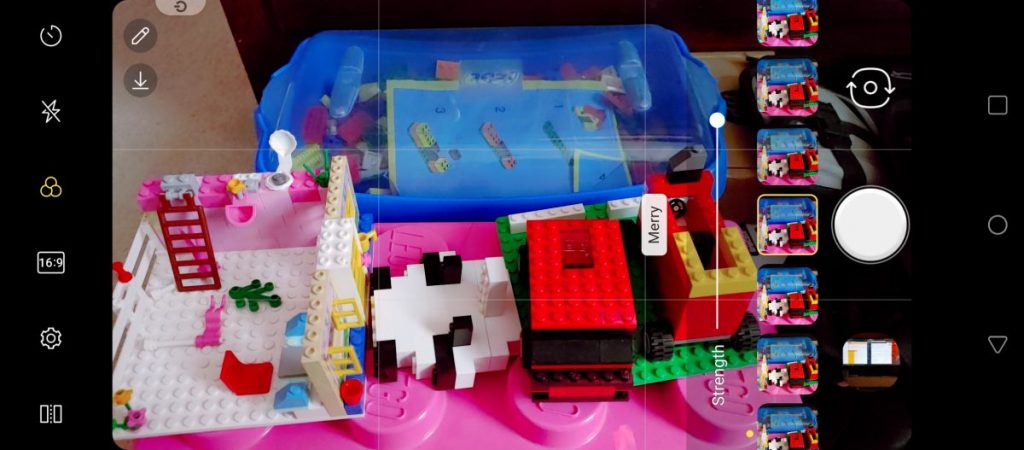
CAMERA
Of course one of the main reasons we buy certain phones is because of the camera. The cameras these devices have are huge selling points and the LG V60 is no different. This year, LG did something a bit different with their cameras which I’ll explain.
Starting with the rear, there are still three cameras, but one them isn’t really being used to capture photos. Instead, this camera called the Z Camera, which is a ToF (time-of-flight) camera used to resolve distance between the camera and the subject for each point of the image. It’s mainly used to determine depth as well as enable 3D camera features for the other two cameras.
The main camera standard angle camera is a 64MP unit which to my knowledge, is the largest LG has even put on a V-series phone. It has a FOV of 78-degrees and an aperture of f/1.8.
The second camera is a wide angle camera at 13MP with a 117-degree FOV and an aperture of f/1.9. LG was one of the first to add a wide angle lens and they continue that tradition with the LG V60. The megapixel count here isn’t quite as large as it was on the LG V50, which was a 16MP unit.
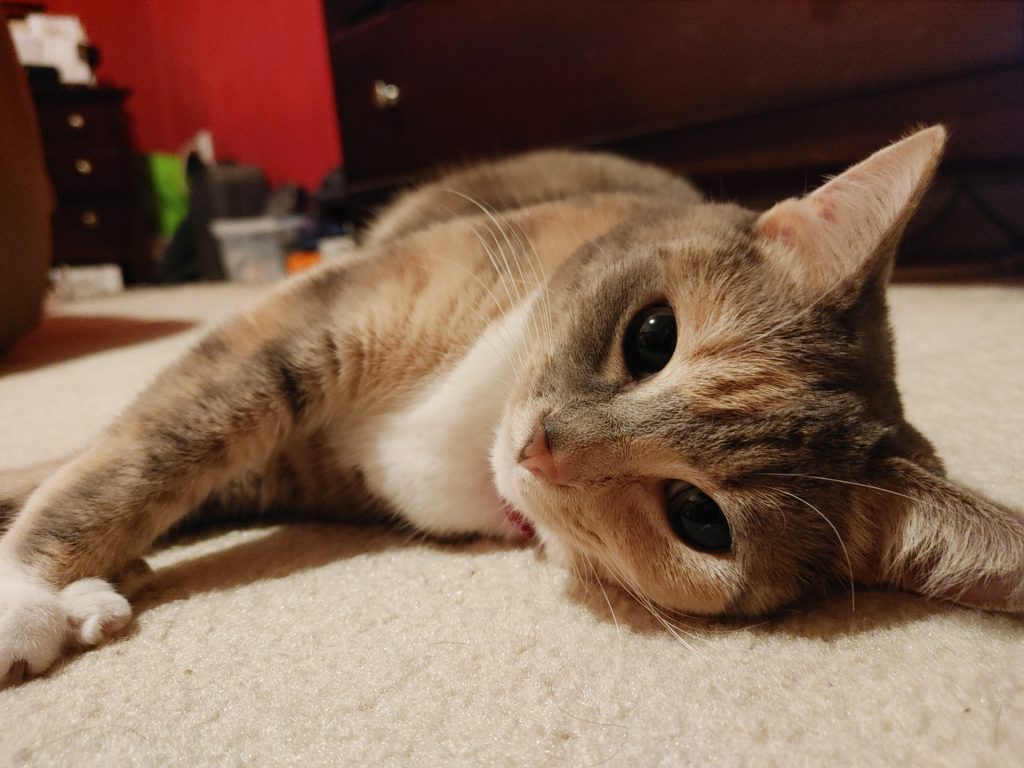
Because that 3rd camera is now a ToF camera, there is no longer a telephoto lens like there was on the LG V40 and V50. Instead, to zoom, it makes use of the main camera which means there’s no more optical zoom and we’re back to using digital zoom. Although from what I’ve tested so far, the 2x digital zoom doesn’t seem that much different from the 2x optical zoom, probably because of the higher megapixel count.
Another first for the LG V60 is that it can record video at 8K resolution! While that’s pretty amazing, I don’t even have anything that plays in 8K. At most all you’ll ever need to record at is 4k and below as 8K is a bit overkill.
Rounding out the camera talk, the software is pretty robust. There are some interesting shooting modes, such as time-lapse, portrait mode (with different portrait effects), AR stickers, panorama mode, slo-mo, cine shot, and manual modes. You can even shoot live photos.
If you use the Dual Screen, you can enable mirror mode, which allows you to shoot your camera at odd angles you would not normally be able to shoot at because you couldn’t see your screen. Now you would be able to. Dual Screen can also be used to view your gallery at the same time as shooting your photos.
I’ll have a sample gallery up soon in a separate post so you can check out the quality more in depth.
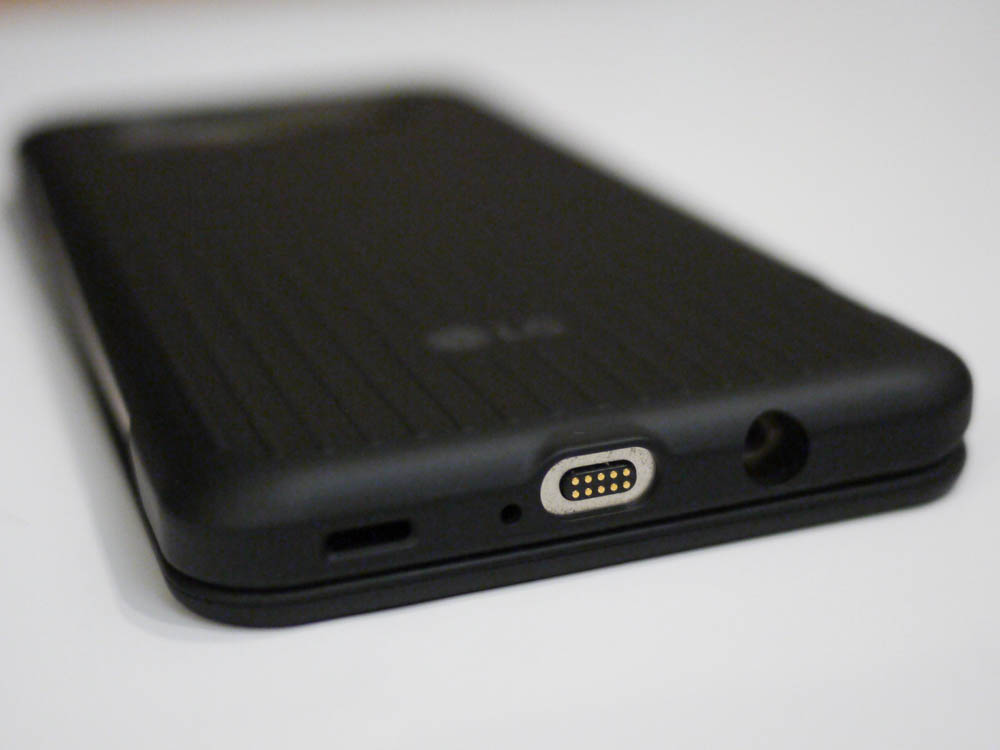
MISC. RANDOM SPECS
Other random specs that the LG V60 ThinQ 5G include are the following:
- IP68 Dust and Water Resistant (up to 1.5m for 30 mins)
- MIL-STD-810G Shock Resistant
- 5000mAh rated battery
- Qualcomm Quick Charge 4.0+
- Qualcomm Snapdreagon 865 Octa-Core Processor w/ 8GB RAM
- Adreno 650 GPU
- Wi-Fi 6
- Bluetooth 5.1
- 4 mics for 3D audio recordings
- Stereo Speakers
There’s actually a lot of tech packed in the LG V60 and it shows in the spec list. It’s very similar to what was in the LG V50, just incrementally better. This of course is usually the case with each new model of the V-series. However, like I mentioned above, there was a decrease in the display resolution, which I find odd as well as the removal of the optical telephoto lens. I am glad they didn’t get rid of the audio jack, even though most of my music these days is played via wireless headphones.
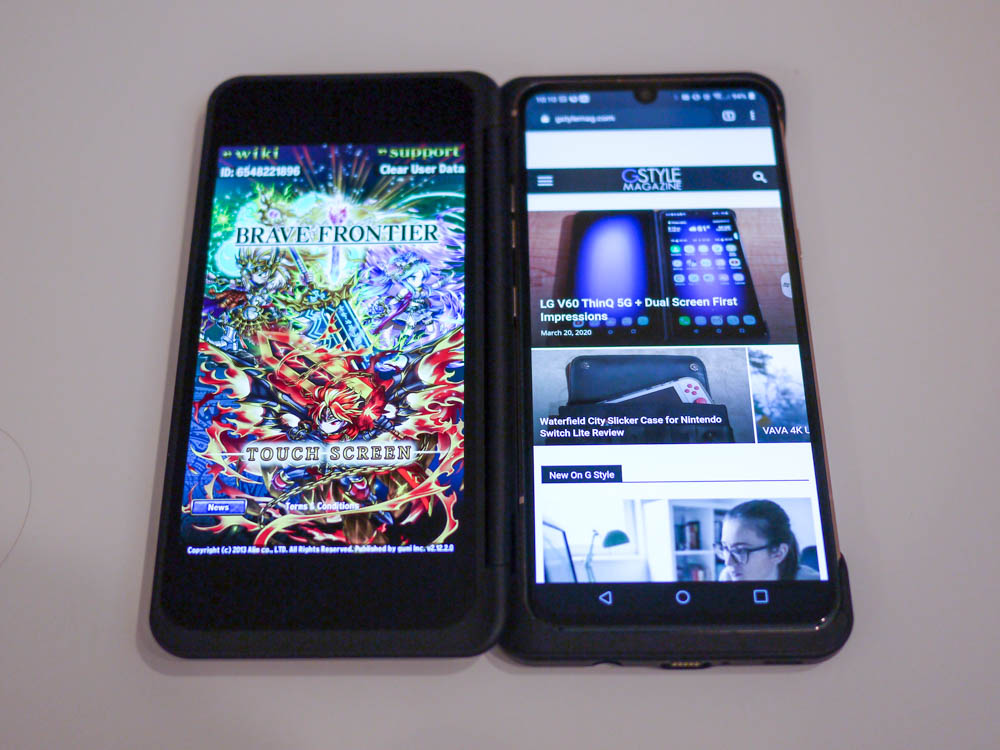
FINAL THOUGHTS
The LG V60 ThinQ 5G is a rather interesting device. There are many things about it that are improvements from the previous devices, but also some minor things that aren’t. The decrease in display resolution is a bit of a head scratcher as well as the removal of the telephoto lens.
What is particularly peculiar though is how LG is able to keep the cost down on this device when every other flagship out there is priced at $1000 or more these days. I’m not complaining though as prices of smartphones these days are getting way out of hand and it’s nice to see a flagship that is still reasonably priced. Depending on the carrier, you can pick this up between $799 and $899 and that even includes the Dual Screen cover. That’s a super deal considering the LG V50 ThinQ 5G + Dual Screen was near $1000.
With that said, the LG V60 ThinQ 5G + the Dual Screen attachment are well worth the upgrade depending on how old your phone is. If it’s a flagship phone from last year, probably not but a phone from two or three generations ago could be worth it. The lower price of this phone is also a big deal. As stated above, a lot of similarly spec’d devices are way up there in price now and I think you get a lot more for your money with this LG V60, especially since you’re also getting the Dual Screen and this phone still has an audio jack. It’s a bargain compared to much of what’s out there and based on my time with it so far, it shouldn’t be overlooked.
That’s it for now, but there will most likely be more follow ups and additions to my LG V60 ThinQ 5G review as time progresses. This will pretty much be my main phone for the next several months so expect a long term follow up. If there are any questions you have about the phone that I may have missed, please hit me up in the comments and I’ll do my best to answer them.



